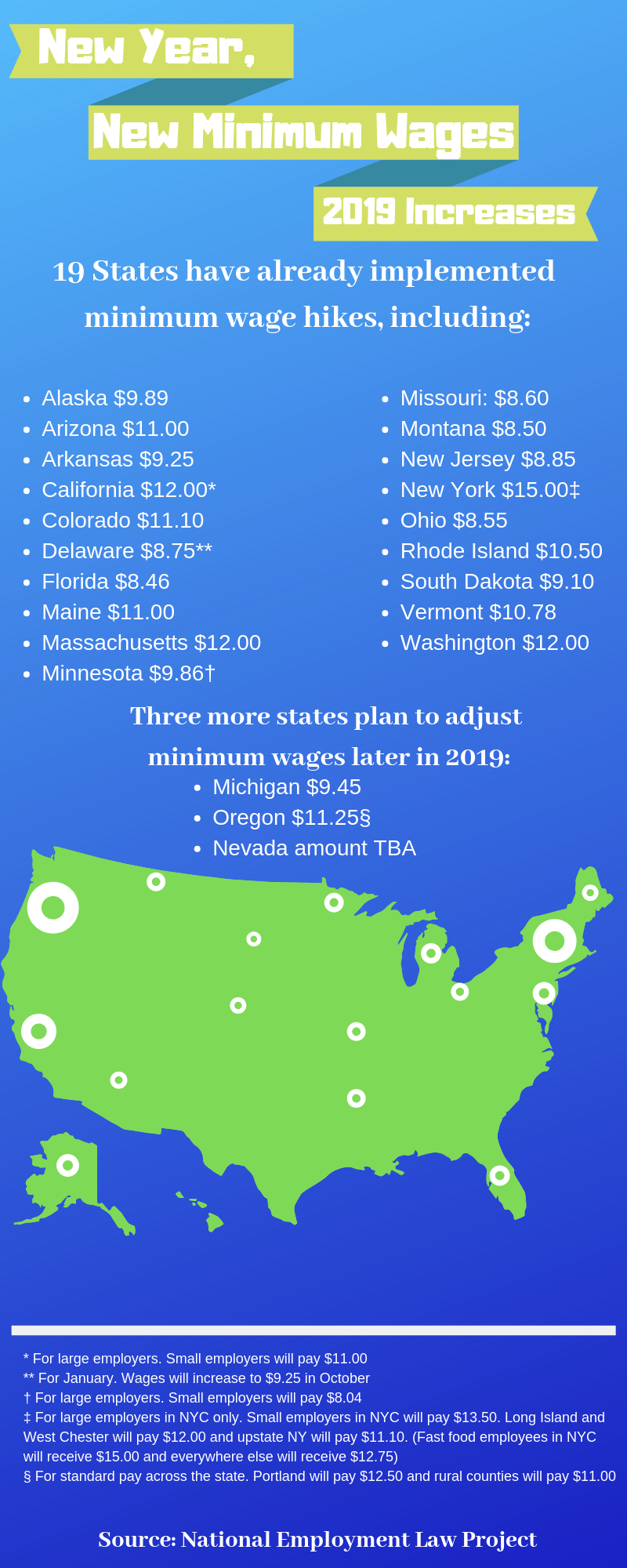For 19 states and 21 cities, the new year started with minimum-wage increases. Another three states and 18 cities (and counties) will follow suit and increase minimum wages later in 2019. The Fight for $15 movement has helped spur these salary increases, but most of the U.S. hasn’t reached the sought-after $15. State-wide minimum wage approvals vary pretty drastically, for example, Delaware approved a state-wide minimum wage of $9.25 to take effect in October 2019 whereas California approved $15 … which will take effect in 2022-2023. (But, thanks to inflation and other economic factors, $15 won’t really be a livable wage by then.)
“The peak value of the minimum wage in real terms was reached in 1968. To equal the purchasing power of the minimum wage in 1968 ($10.69), the current minimum wage’s real value ($7.25) would have to increase by $3.44 (or 47 percent),” says Craig K. Elwell, specialist in macroeconomic policy at the Congressional Research Service in Washington. “Although the nominal value of the minimum wage was increased by $5.65 (from $1.60 to $7.25) between 1968 and 2009, these legislated adjustments did not enable the minimum wage to keep pace with the increase in consumer prices, so the real minimum wage fell.”
Not surprisingly, most of the cities that will reach $15 this year are in urban, expensive areas of California. Employees at fast-food chains or large companies in New York City will also see $15/hr. this year. There are also a few cities that have minimum wages above $15, including Sunnyvale, Calif., ($15. 65), SeaTac, Wash., ($16.09) and Seattle, Wash., ($16 for larger employers).


